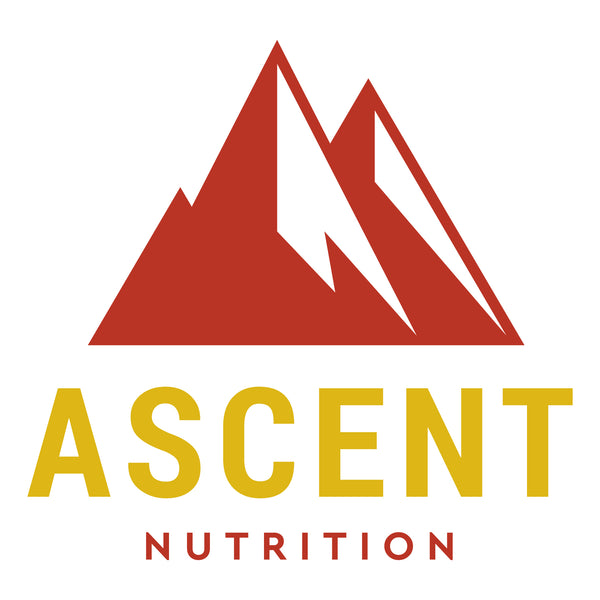
The Pine Pollen Superfood Benefits and The Unique Source
Pine pollen is an under-known superfood that has been used in Traditional Chinese Medicine (TCM) for hundreds of years and is also backed by even more recent scientific publications. (1)
My fascination with pine pollen began when I started searching for some of nature's highest sources of phytohormones. As I learned, it is pine pollen that is said to be the highest source of these special compounds, while also being an incredible food for us.
Before we get to some fascinating details about pine pollen and why the Pine Pollen from Ascent Nutrition is unique, let's first discuss some of the basics.

What is Pine Pollen?
Pine pollen is a small, yellow dust-like looking superfood that comes from various pine tree species in the wild. While the word superfood has been far too loosely used in nutrition, health and wellness circles, pine pollen meets and exceeds the qualifications as such.
What are the main benefits of Pine Pollen?
In Traditional Chinese Medicine and throughout the literature published on PubMed, the main benefits of pine pollen include supporting healthy, normal hormone functioning in both men and women, support for healthy cardiovascular function and support for healthy endocrine function. It is also well known to support healthy libido and circulation of blood. (2)

Further benefits to pine pollen can include supporting healthy detoxification (because of the nutrients and compounds listed below), brain health support and joint health support. (3)
What Nutrients Are In Pine Pollen?
Within that matrix of pollen contains an abundance of nutrients and some are found in concentrations unlike any other source found in nature. This includes over 200+ bioactive nutrients that the human body can use, such as 14 vitamins, 24 minerals, all of the 20+ amino acids at 15% volume, 18 living enzymes, essential fatty acids and nature highest source of phytohormones.
Specifically, some of these nutrients in pine pollen include 1-2% sterols, numerous polyphenols, 2% flavonoids, myoinositol, phosphatidylcholine (PC), phosphatidylethanolamine, phosphatidylglycerol, phosphatidylserine (PS) and plant lignin.
Pine pollen also contains polysaccharides, which are known as complex sugars, and are naturally present within as well. Two of these polysaccharides found in pine pollen are arabinogalactan and xylogalacturonan.

Additionally, pine pollen contains super important and powerful nutrients like glutathione, methylsulfonylmethane (MSM) and superoxide dismutase (SOD). More on these important compounds will be discussed below.
Pine pollen also contains minerals like calcium, magnesium, potassium, selenium, iron, manganese, strontium, phosphorus and more.
Phytohormones Naturally Present Within Pine Pollen
Pine pollen health benefits also are derived from a huge number of naturally occurring bioactive molecules needed for germination of the pine pollen grain.
Pine pollen also has five other potent plant hormone compounds (phytohormones) that are needed for germination. These include the highly prized cytokinins, gibberellins, auxins, abscisic acid and ethylene. Further research into these compounds detail how potent their biological activity is and the effects they may elicit. (4, 5,)

Plant phytohormones are found throughout the plant kingdom, such as in new, young plant growths and germinating seeds. Germinated broccoli seeds and certain sprouts are two examples in nature that have these nourishing plant hormones…but the highest concentration of these plant molecules are found in pine pollen.
Pine Pollen, DNA and Germination
The Mickey-mouse shaped pollen grain is a single living plant cell and the two “ears” capture air and help carry the pollen grain. The complex sugars, which are also known as polysaccharides, along with the strong free radical scavengers, protect the pollen’s DNA against radiation and environmental damage while floating through the air.

Once the grain land on a pine seed, it must stay attached to the seed with its germination filament for a full year. Then a second burst in the following year leads to the transfer of its DNA.
Within the pollen there is an abundance of amino acids, vitamins, minerals, phytohormones and other nutrients that stimulate rapid, life-giving growth through this second year burst.
Ascent Nutrition Pine Pollen Difference
While most pine pollen products are sourced from China, we at Ascent Nutrition source ours from remote Canadian forests and wild-harvest with love and respect for nature. Our pine pollen also remains a wild, raw and living superfood.
Additionally, we go the extra steps to utilize the most unique and potent extraction the industry.
Most companies will use “cracked cell-wall pine pollen,” whereas we use the whole, uncracked cell-wall pine pollen. This allows for our pollen to not be damaged by light and for nutrients to be preserved.

Ascent Nutrition’s pine pollen is the bright golden, yellow color in the top two bins. Because our pine pollen is uncracked, oxidation does not occur and ALL of the nutrients within remain alive and fully potent.
Cracked cell-wall pine pollen, as seen in the darker brown bin, oxidizes quickly and the brown color results from nutrients losing their potency.
Which would you prefer?
An as overview, Ascent Nutrition Pine Pollen benefits can be summarized:
Contains over 200 bioactive nutrients beneficial for human health.
- Nature’s best source for plant brassino-compounds, including the “youthing” phytohormone.
- An incredible source for powerful free-radical scavengers glutathione and SOD (superoxide dismutase).
- Supports a healthy libido and supports endocrine balance.
- Supports brain health, cardiovascular health, adrenal health, thyroid health, healthy detoxification and healthy blood sugar levels.

Click here to purchase our Ascent Nutrition Pine Pollen Tincture.
Lance Schuttler, CEO of Ascent Nutrition
References
1. https://www.ncbi.nlm.nih.gov/pmc/articles/PMC8318335/
2. https://www.ncbi.nlm.nih.gov/pmc/articles/PMC8318335/
3. https://link.springer.com/chapter/10.1007/978-3-319-63001-4_14
4. https://www.sciencedirect.com/science/article/abs/pii/S0039128X12002395
5. https://www.sciencedirect.com/science/article/abs/pii/S0039128X11003138?via%3Dihub
